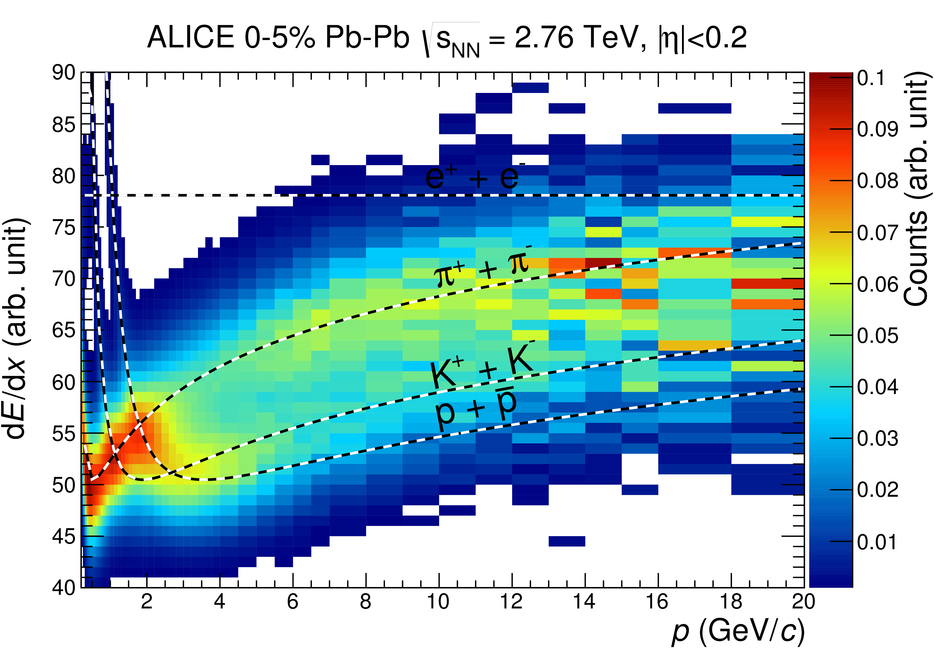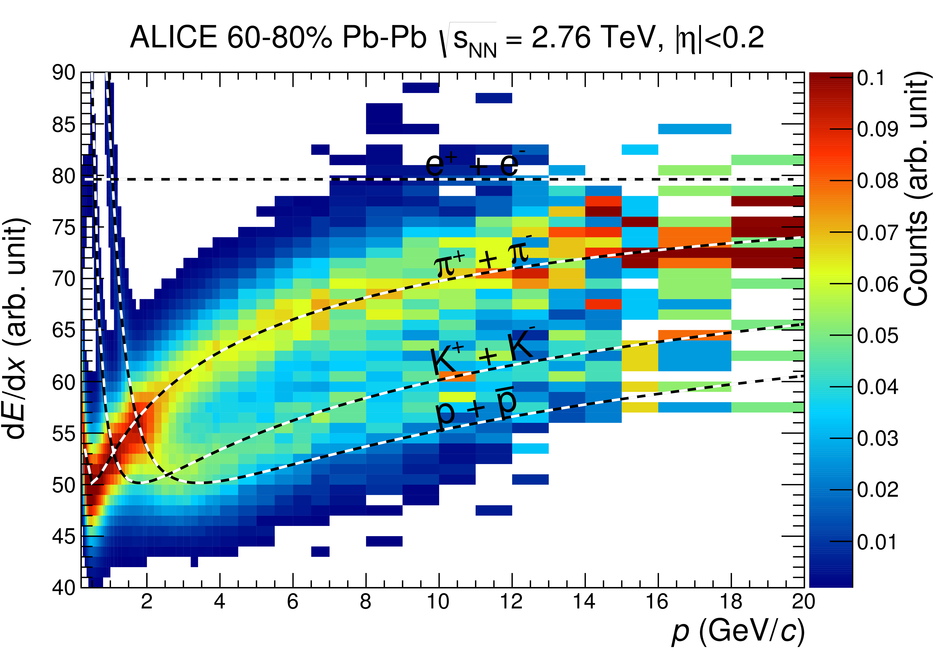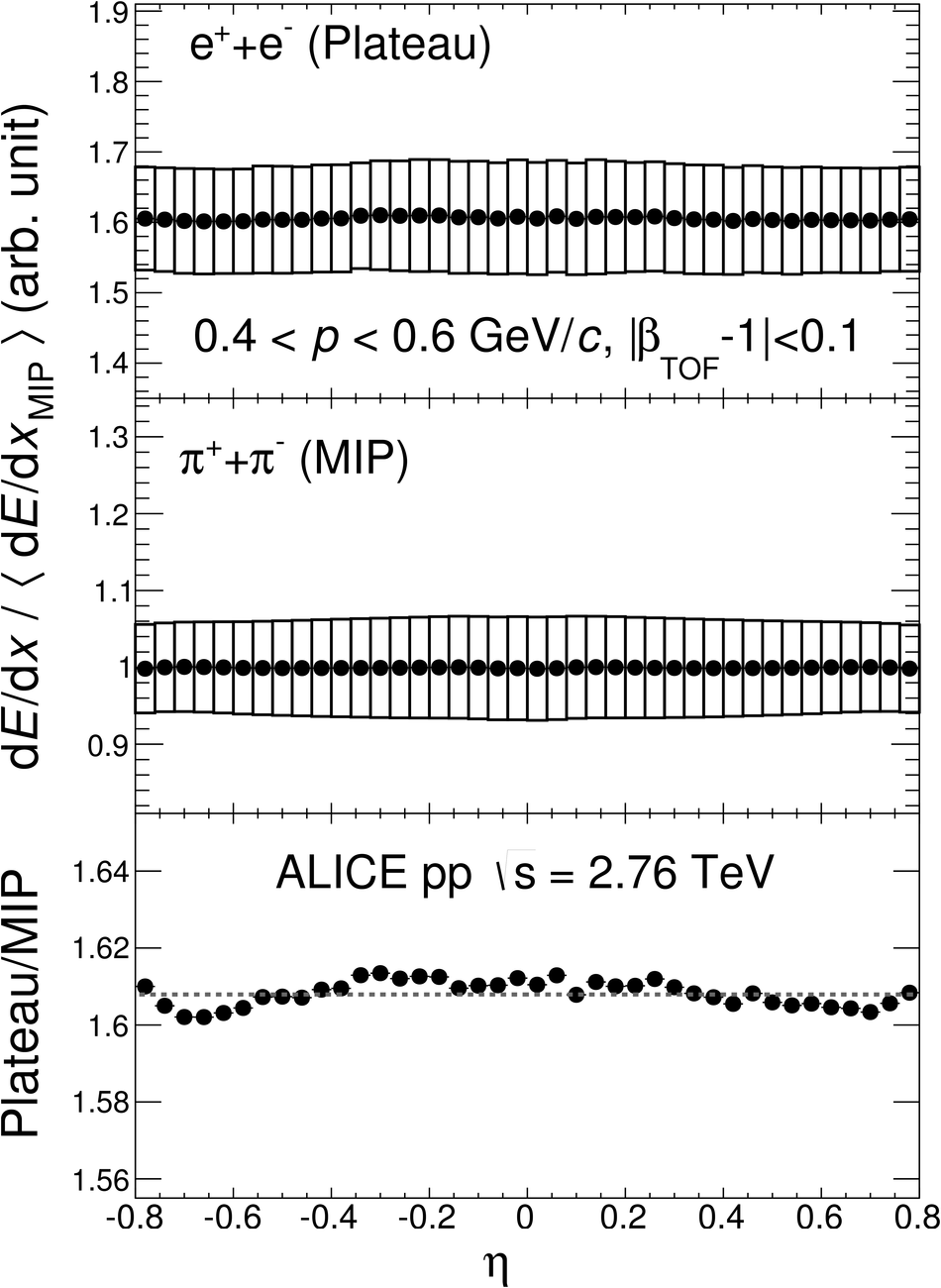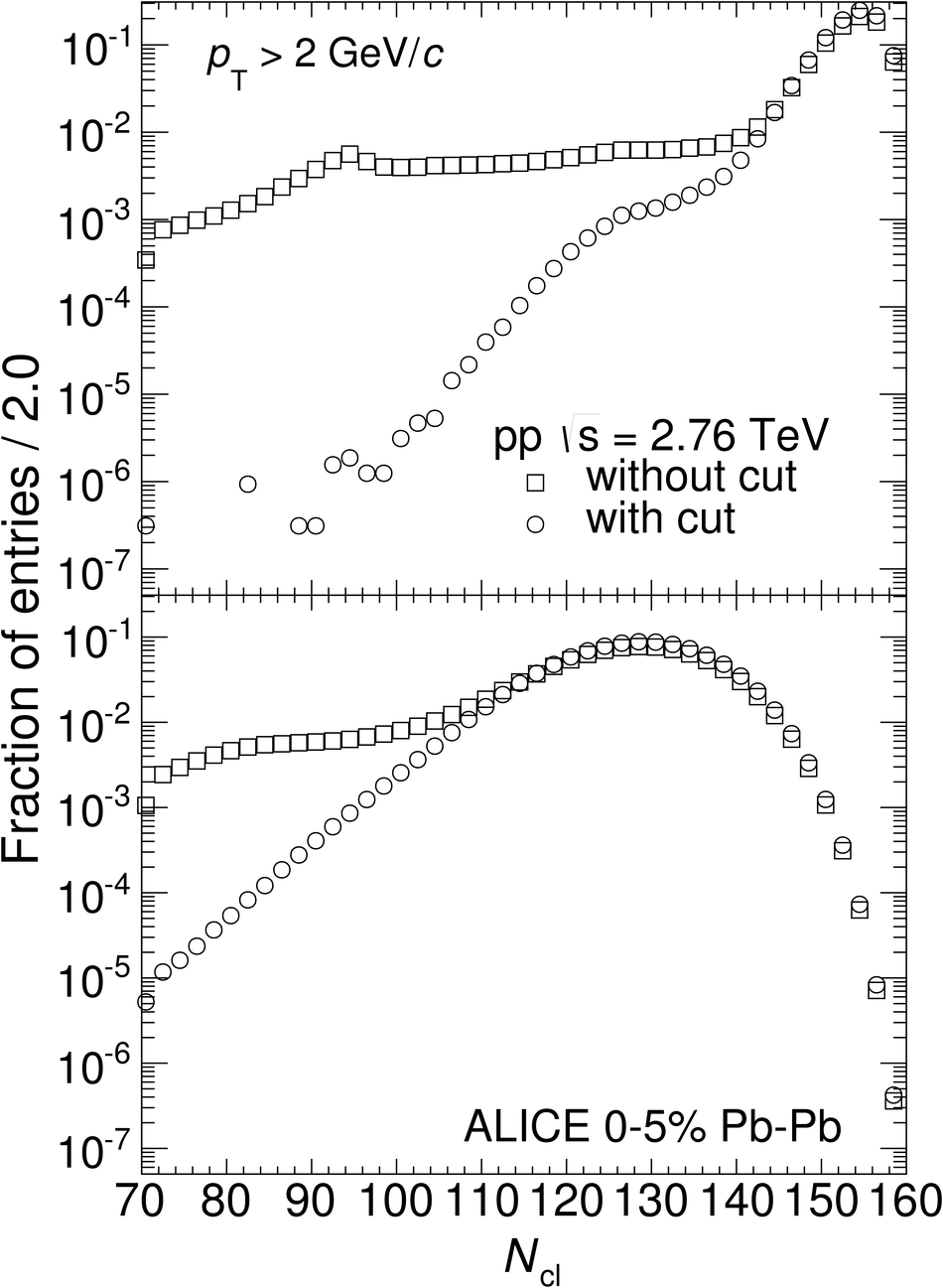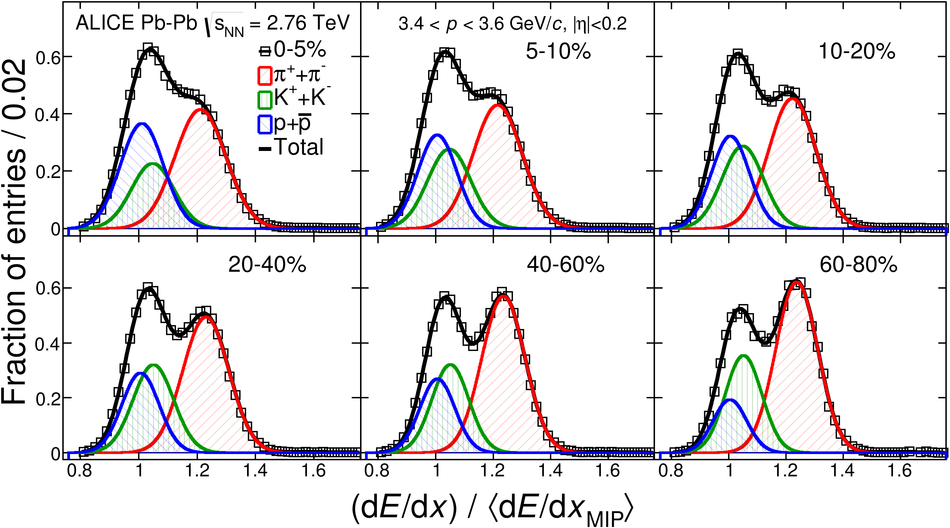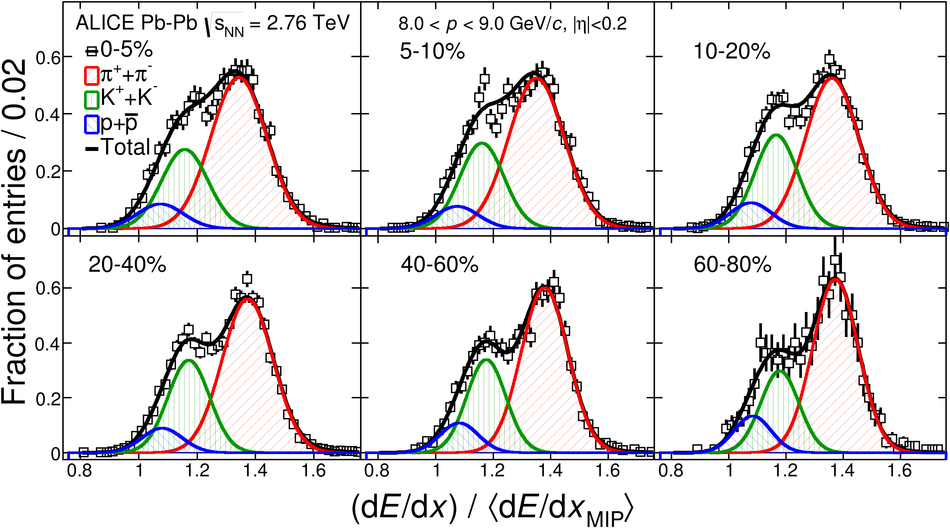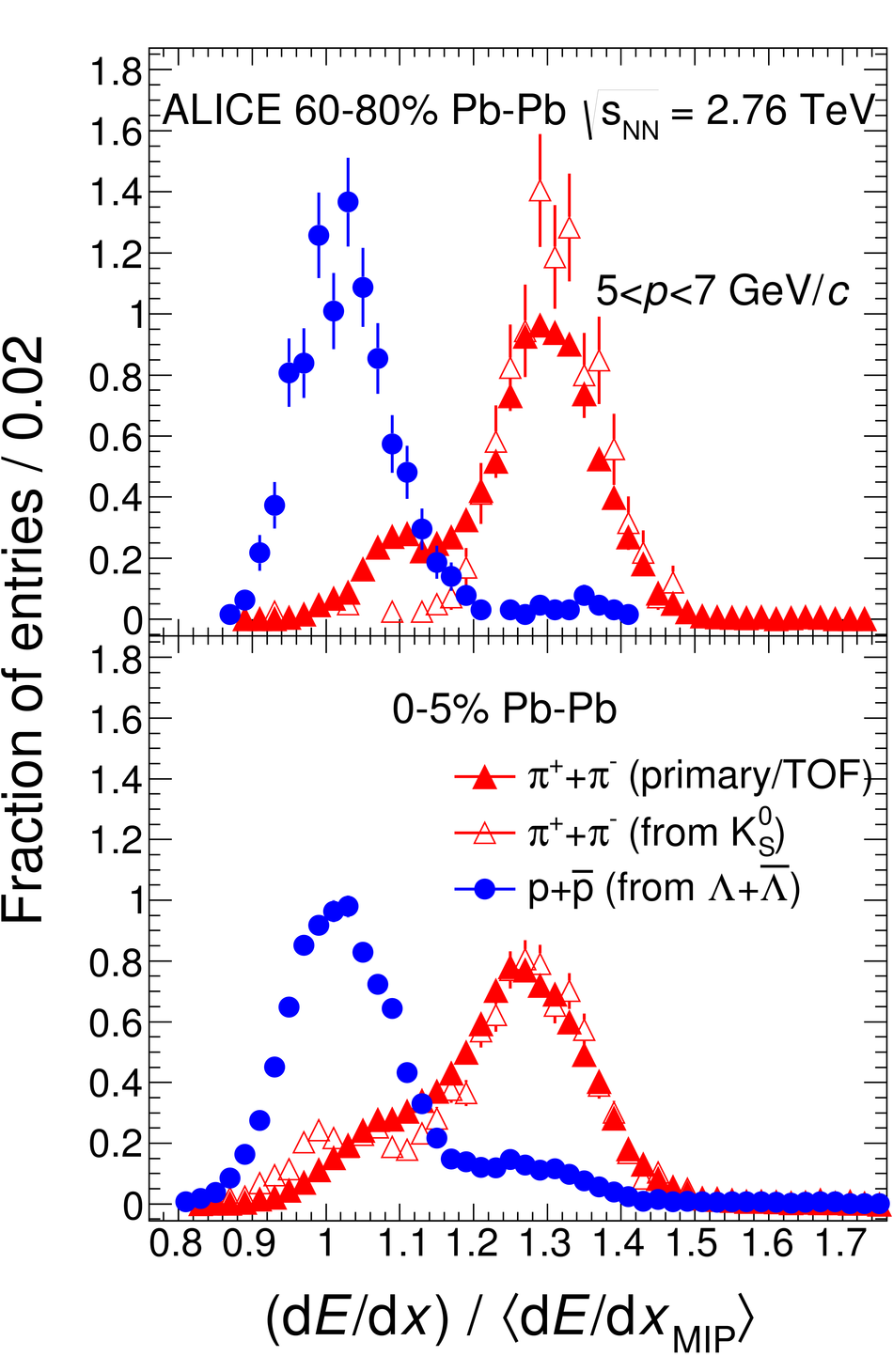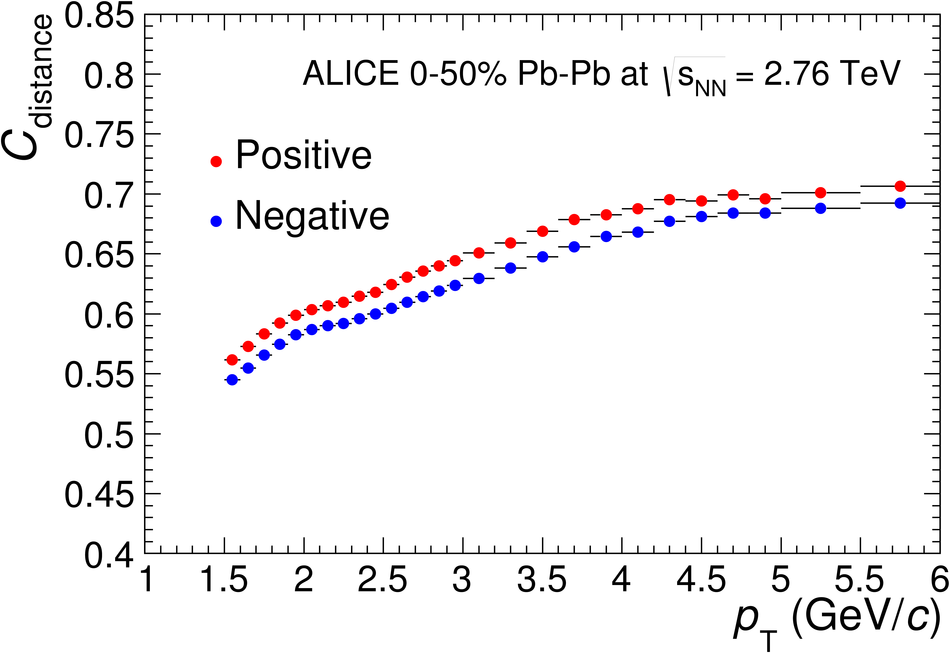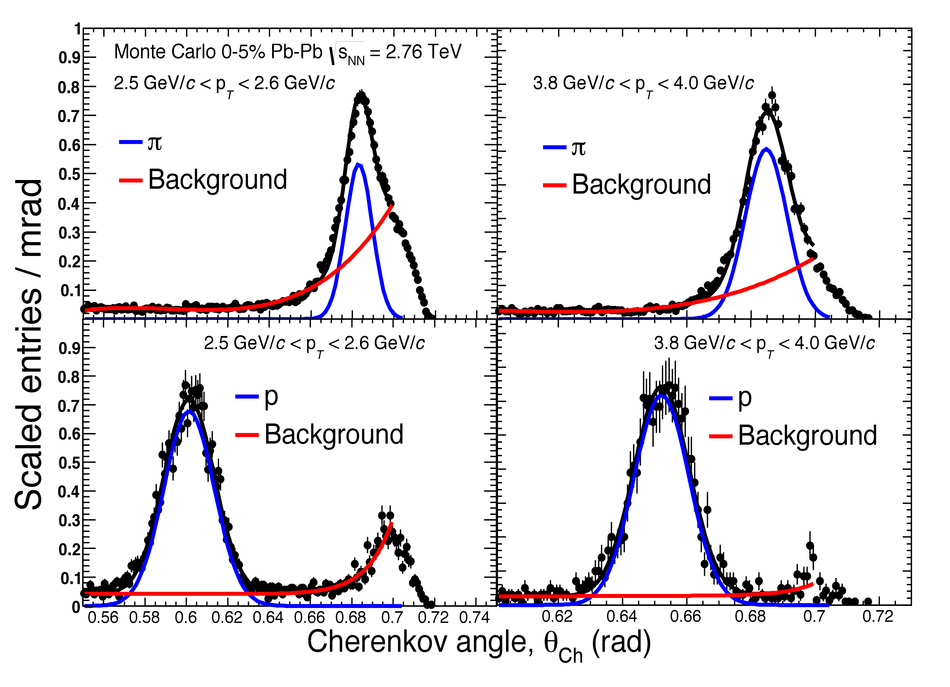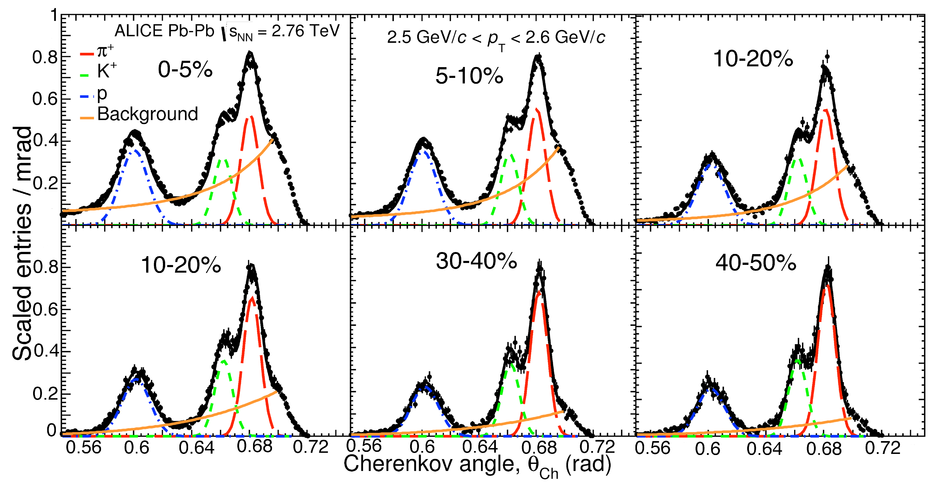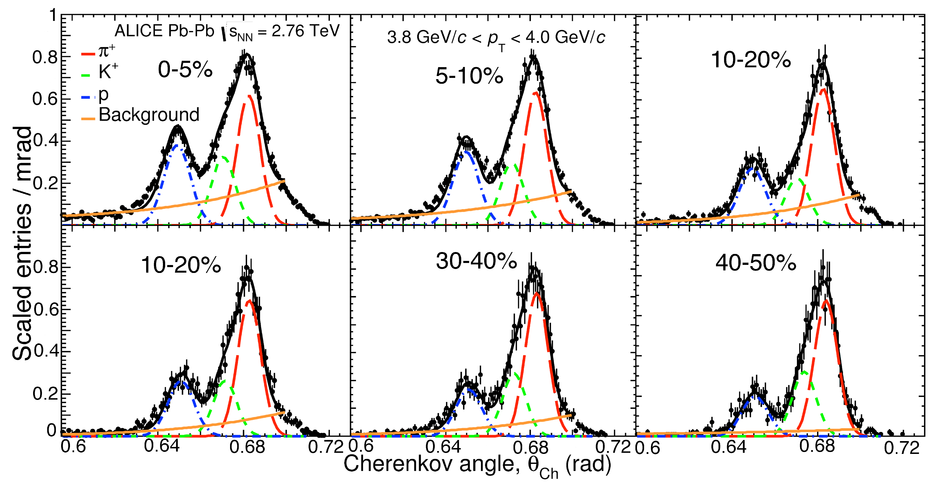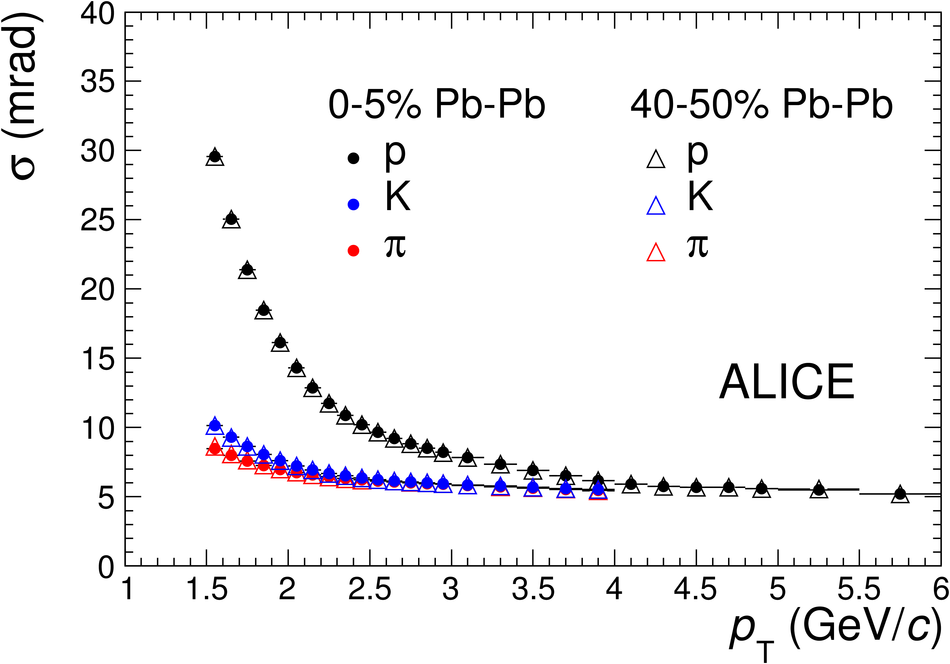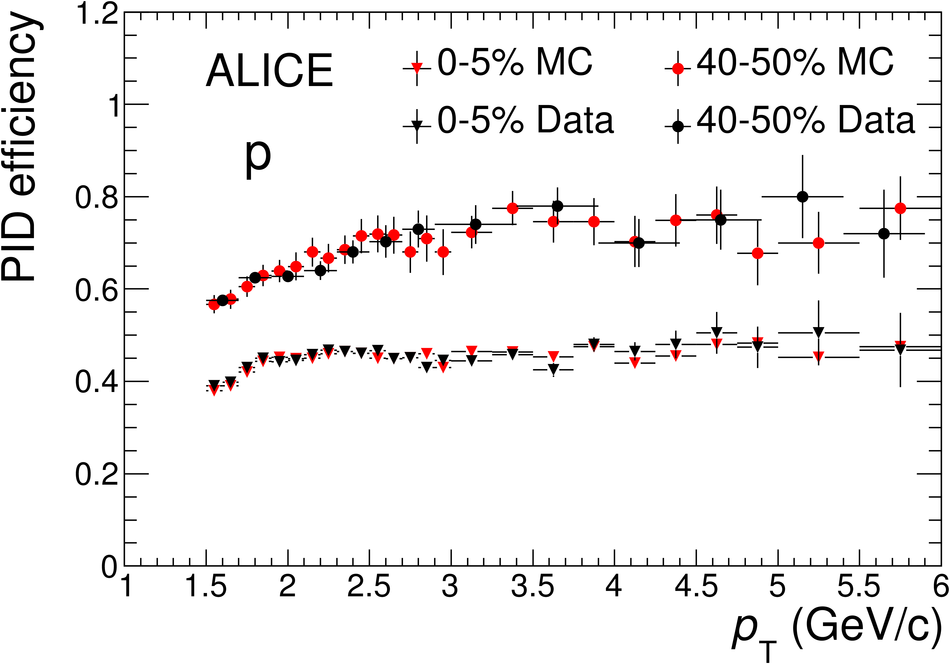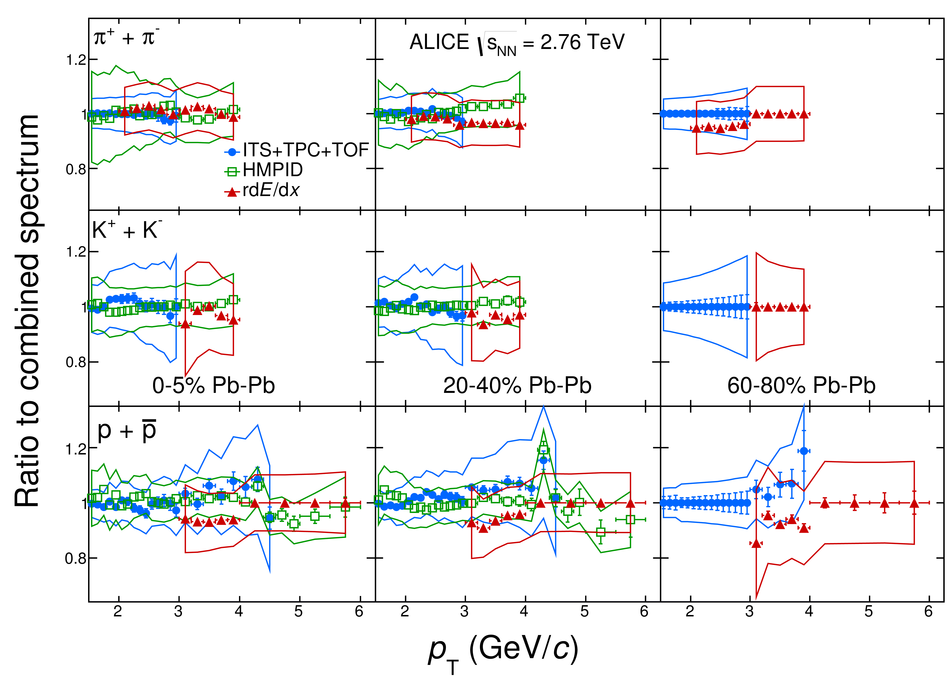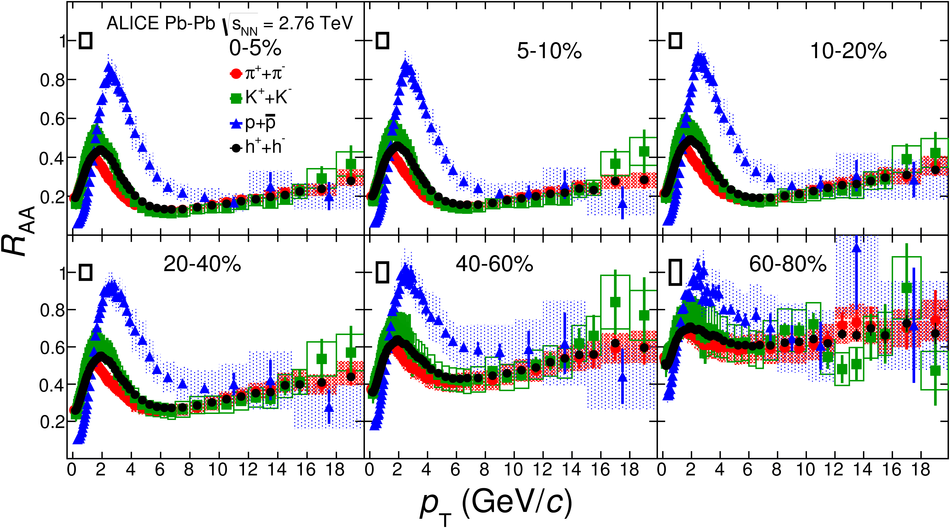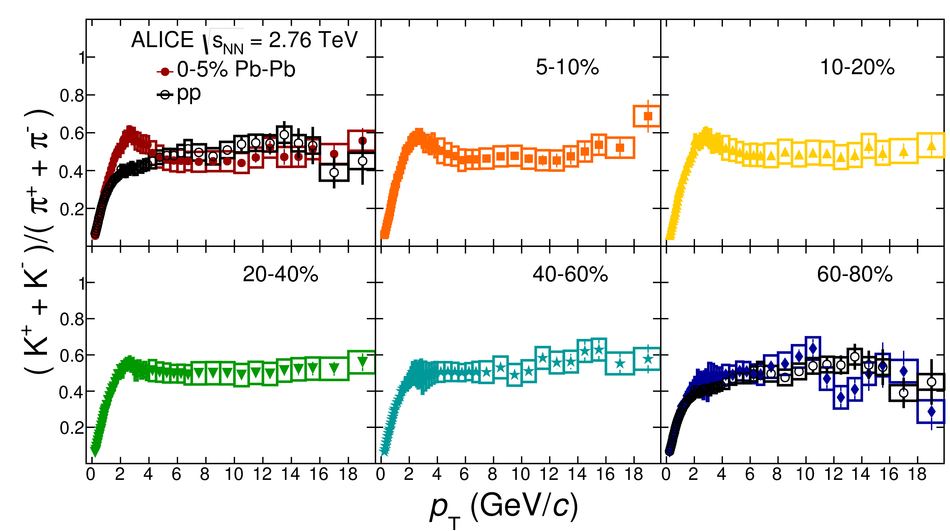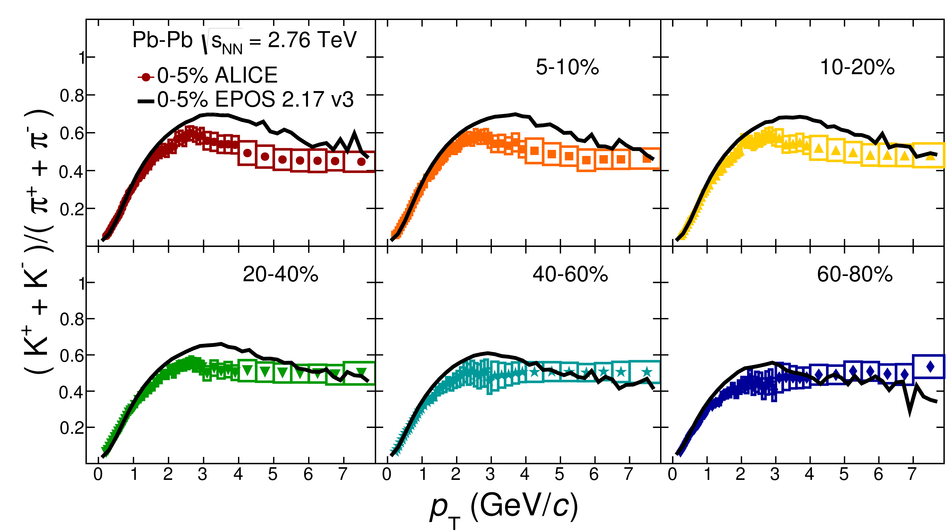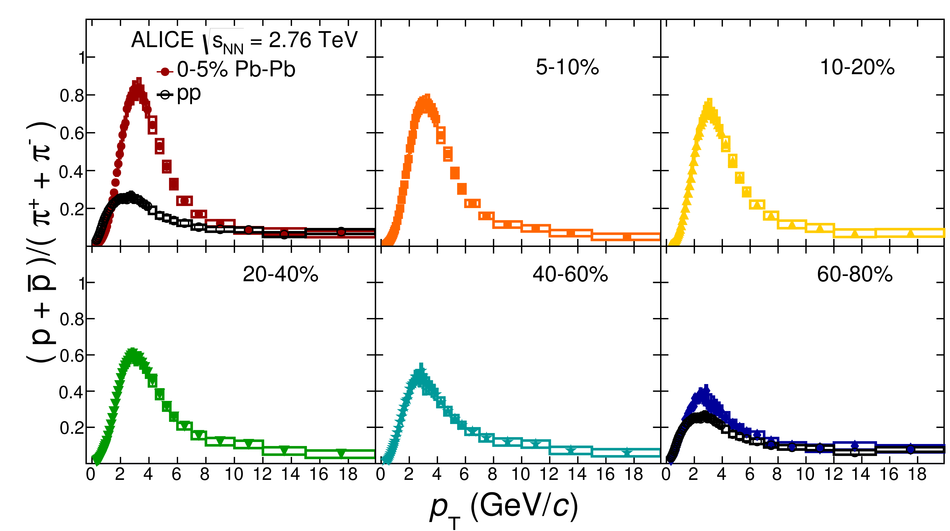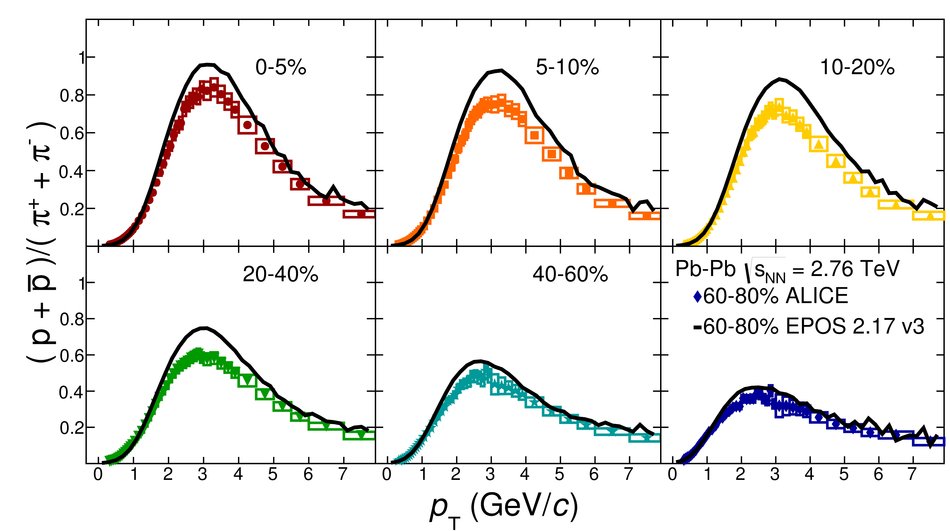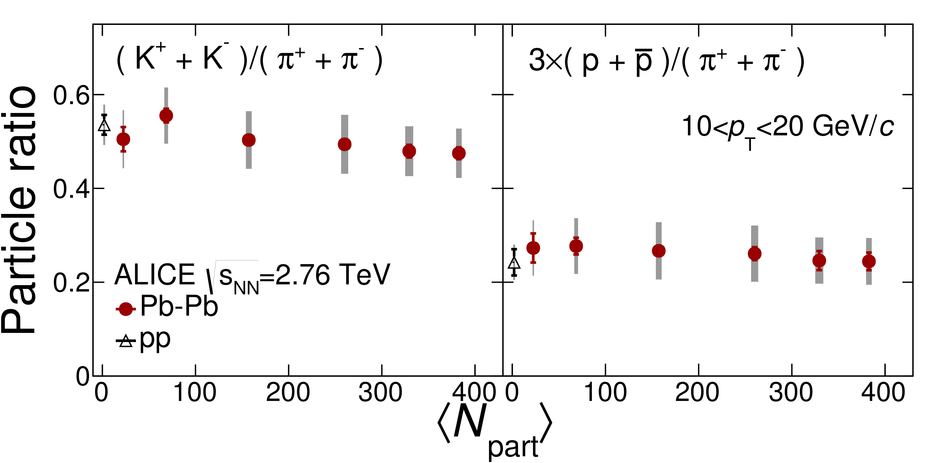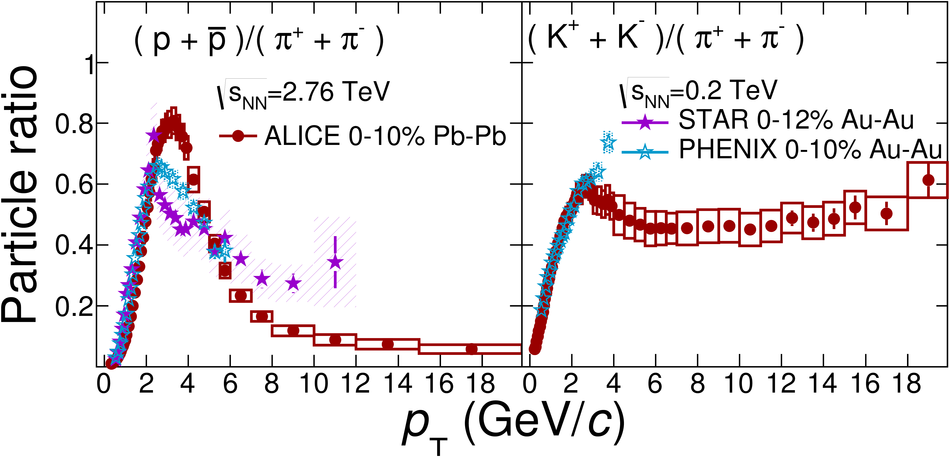Transverse momentum ($p_{\rm{T}}$) spectra of pions, kaons, and protons up to $p_{\rm{T}} = 20$ GeV/$c$ have been measured in Pb-Pb collisions at $\sqrt{s_{\rm NN}} = 2.76$ TeV using the ALICE detector for six different centrality classes covering 0-80%. The proton-to-pion and the kaon-to-pion ratios both show a distinct peak at $p_{\rm{T}} \approx 3$ GeV/$c$ in central Pb-Pb collisions that decreases towards more peripheral collisions. For $p_{\rm{T}} > 10$ GeV/$c$, the nuclear modification factor is found to be the same for all three particle species in each centrality interval within systematic uncertainties of 10-20%. This suggests there is no direct interplay between the energy loss in the medium and the particle species composition in the hard core of the quenched jet. For $p_{\rm{T}} <~ 10$ GeV/$c$, the data provide important constraints for models aimed at describing the transition from soft to hard physics.
Phys. Rev. C 93 (2016) 034913
HEP Data
e-Print: arXiv:1506.07287 | PDF | inSPIRE
CERN-PH-EP-2015-152

